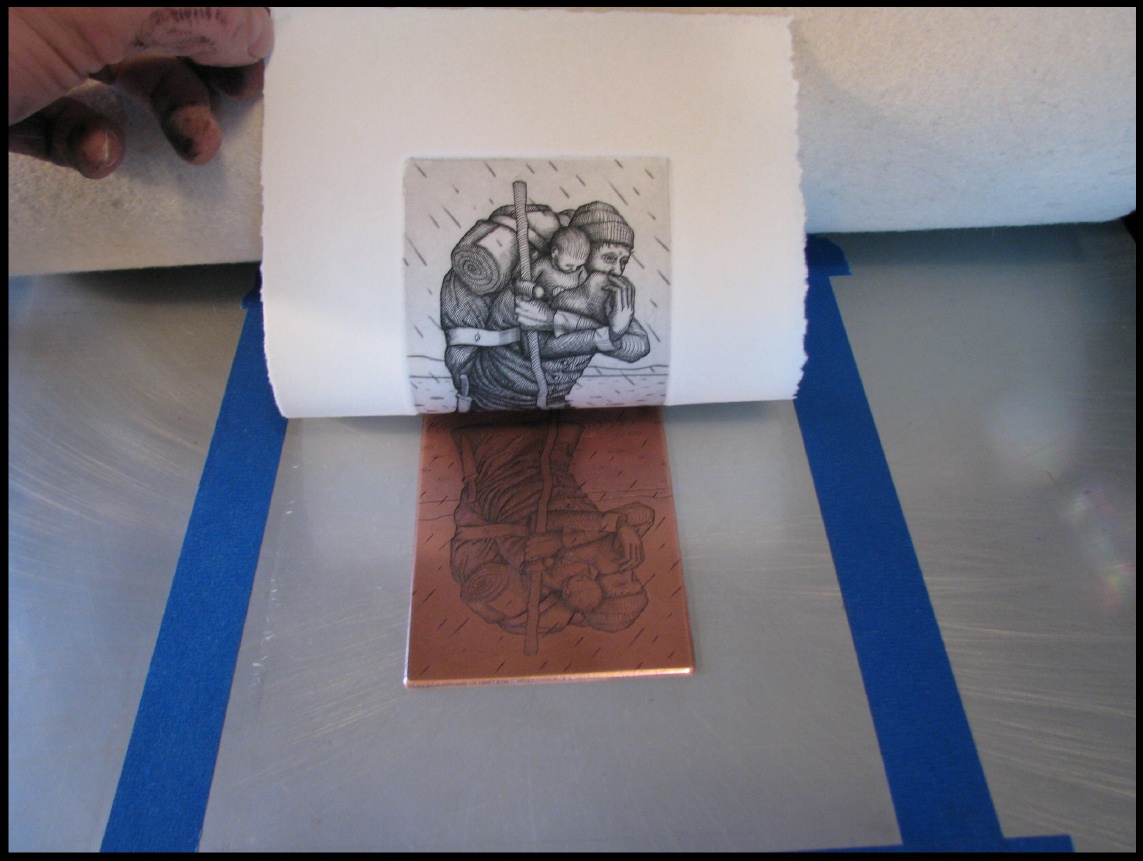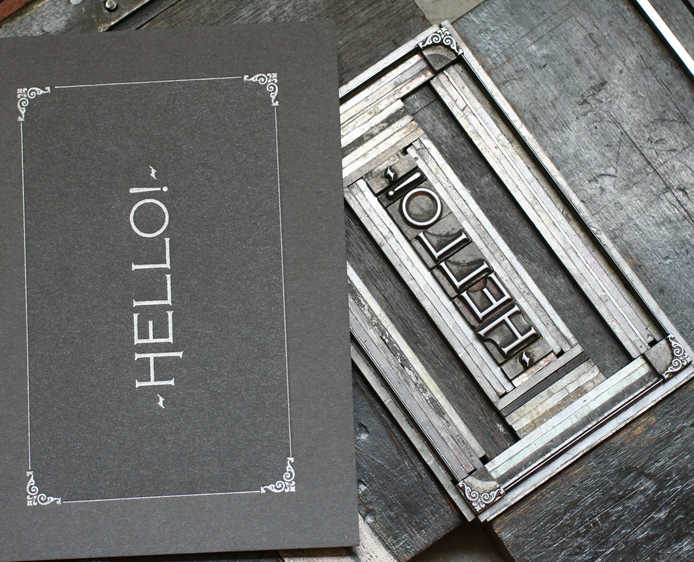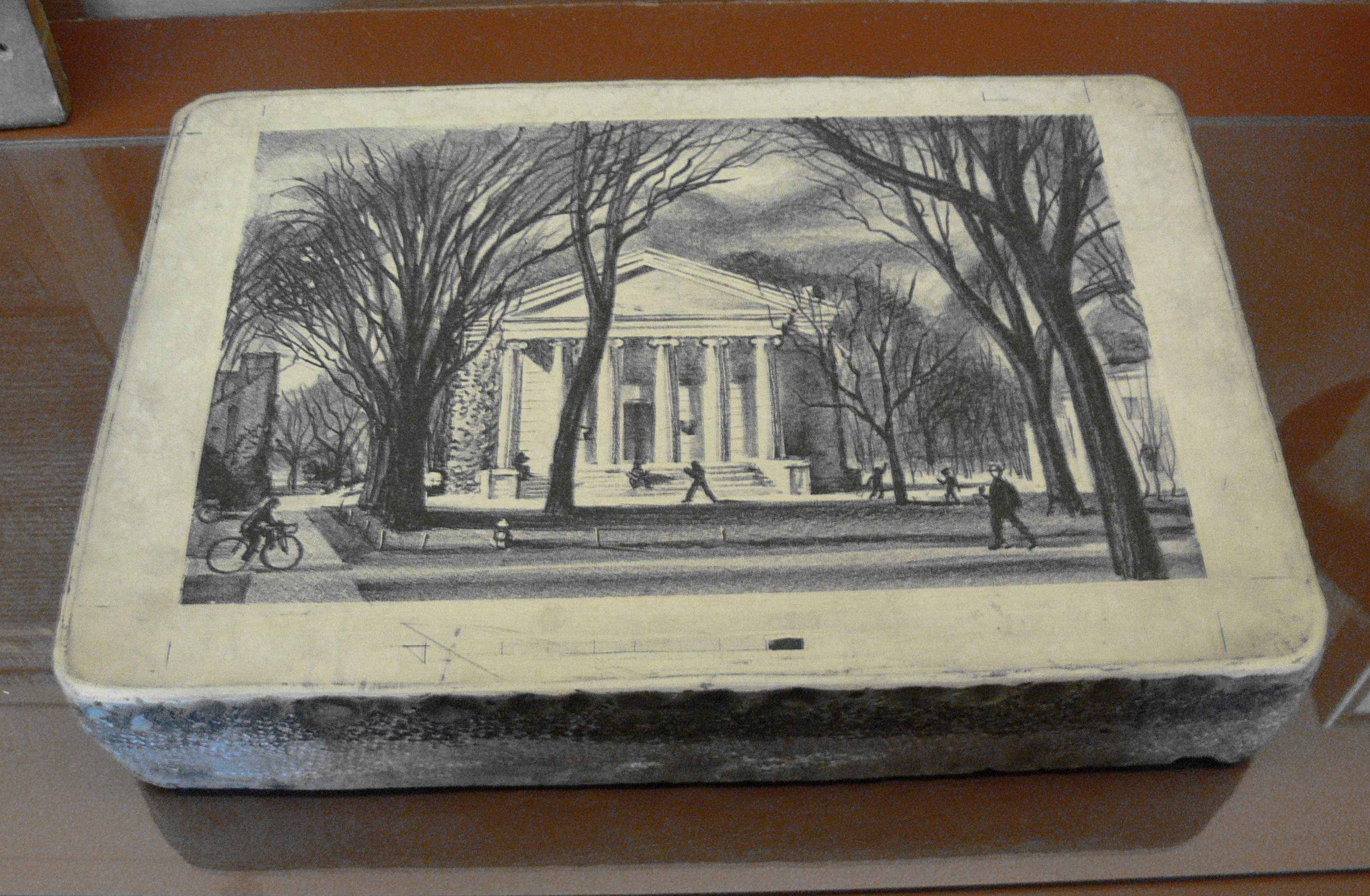Printmaking- is the process making of
making a variety of artwork by using the method of printing, normally on paper,
but also sometimes on such materials and objects as wood, lino and metal depending
on the printing style. Printmaking normally
covers the quality and originality of creating the prints, rather than just
having a photographic reproduction of a painting.
105 AD – is cited as the year in which papermaking was invented in china.
1380- Woodcut
Printmaking, a relief printing plate made by carving marks in blocks of
long grained planks or plywood. Long-grain refers to the grain following the
direction of growth. For example, parallel to the tree trunk/ branch the piece of
wood was cut from.
 |
| engraved print |
1420-30- Printed
Engraving is a method where metal plates begin to replace the use of carved
wooden printing blocks for the reproduction of works of art. A plate of soft
metal is used, most often copper, and the design engraved (cut into) into the
surface using a tool called a “burin” which is a square tool-steel rod,
sharpened diagonally at one end so that the prominent corner becomes an
effective controllable cutting edge.
 |
| LetterPress print |
1440-50- Letterpress
Printmaking is a technique of relief printing using a printing press. A worker
composes and locks movable type into the bed of the press, inks it, and presses
paper against it to transfer the ink from the type. Which creates an impression
on the paper.
 |
| Etching print |
 |
| lithography print |
1796-8 – Lithography originally
based on the immiscibility of oil and water. Printing is from a stone
(lithographic limestone) or metal plate with a smooth surface.
 |
| Photogravure print |
1852- Photogravure is
intaglio printmaking or photo-mechanical process whereby a copper plate is
coated with light- sensitive gelation tissue which had been exposed to a film positive,
and then etched, resulting in a highly quality intaglio print that can
reproduce the detail and continuous tones of a photography.

No comments:
Post a Comment